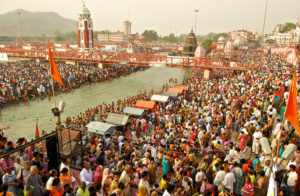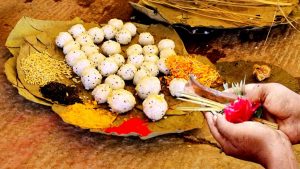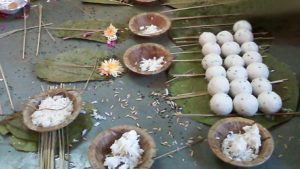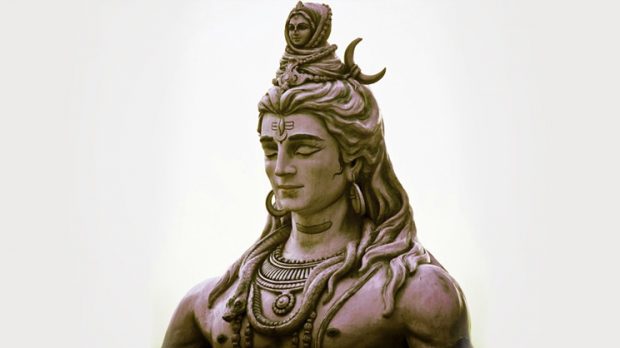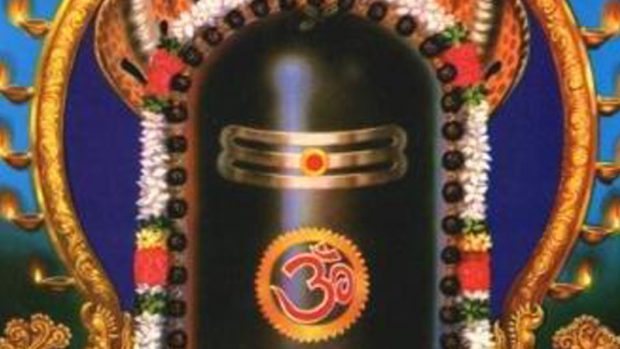Mahashivratri Vrat, Rituals and Significance
Mahashivratri Vrat, Rituals and Significance
The significance of some of the major puja items used to celebrate Mahashivratri include the following. According to the Shiva Purana, there is special significance attached to the six essential puja items that are used in the worship of Lord Shiva. Bathing the Shivalinga with water, milk and honey and wood apple or bel leaves added to it is considered to represent the act of purification of the soul. Vermilion paste that is applied on the linga after a ritual bath represents one’s virtue. Offering fruits is a symbol of longevity and gratification of desires. Burning incense sticks is said to yield wealth. Lighting the lamp is the representation of attaining knowledge. Offering betel leaves marks one’s satisfaction with worldly pleasures.
All-Night Shiva Worship
The worship of Lord Shiva goes on all night on the day of Shivaratri. Devotees stay awake all night long, most of whom spend the night in the Shiva temples to worship Lord Shiva. They sing hymns and verses in praise of Lord Shiva. They also intensely chant Om Namah Shivay, which is a mantra that frees people of all their sins. The process of worshipping Lord Shiva by the priests continues through the night. During this part of the worship, Lord Shiva is given special food that is made of fruits of the season, some root vegetables and coconuts. Those who observe a fast will break it the next morning after eating the Prasad.
Shivaratri Fast
The Shivaratri Fast is considered the most important one for the devotees of Lord Shiva. Shiva Purana informs that if a devotee observes the fast, or the Shivaratri Vrata with great devotion and sincerity, he is blessed with Lord Shiva’s Divine Grace. Every year, devotees observe the fast with devotion and sincerity.
Merits of Mahashivratri Vrat
According to Hindu legend, observing the fast on Mahashivratri with great discipline helps one to control the two great natural forces that afflict a man, namely: rajas guna (or the quality of passionate activity) and tamas guna (or the quality of inertia). When a devotee spends a whole day at the Feet of the Lord and worships him with sincerity, his motion is controlled and evil like lust, anger and jealousy, born of Rajas are ignored and subdued. When a devotee keeps vigil all night long, (or the jaagran) he is able to conquer the evils of Tamas Guna too. It has also been mentioned that when a devotee worships once every three hours, the Shivaratri Vrata becomes perfect. Devotees of Lord Shiva consider Shivratri to be extremely auspicious and rate it as being equal to, or more than the act of performing an Ashwamedha Yagna. Some people tend to believe that a devotee who observes the fast on Shivaratri with sincerity and chant the name of Lord Shiva with a great sense of devotion, that person is absolved from all sins. He reaches the abode of Lord Shiva and lives there happily. He is liberated from the cycle of birth and death.
Customs and Traditions of Shivaratri Fast
Traditionally, people who go on a strict fast on Shivaratri take a bath with the water that is boiled with black sesame seeds. This is done in order to rid themselves of any bodily impurities. After putting on fresh new clothes, a devotee visits the nearest temple for Lord Shiva to perform a ritual. The Shiva Linga is bathed with milk, honey and other things, as the devotee prays saying, “O Lord ! I will bathe Thee with water, milk, etc. Do Thou kindly bathe me with the milk of wisdom. Do Thou kindly wash me of all my sins, so that the fire of worldliness which is scorching me may be put out once for all, so that I may be one with Thee – the One alone without a second.”
Next, the devotee applies a mix of haldi and kumkum on the lingam and places a garland of white and pink flowers on it. Bel leaves are placed atop the Lingam. Aarthi and bhajans in praise of Lord Shiva are sung to invoke his blessings. Devotees light incense sticks and ring the bell to invoke the blessing of the large-hearted Lord Shiva. In other festivals, the ritual involves performing the Puja followed by a feast. But in Shivratri, the fast continues all day and night long. Devotees observe a vigil all night and chant the mantra: “Om Namah Shivaya” and sing devotional hymns. Even at night, Shiva Linga is given a holy bath once every three hours. Fruits are given to the deity. There is a tradition to listen to the recital of several mythological stories, legends and folklore that tie in with Shivaratri and Lord Shiva. The next morning, the fast is broken after the prasad offered to Lord Shiva is eaten.
Reach us to be a part of our whatsapp spiritual reminder group
